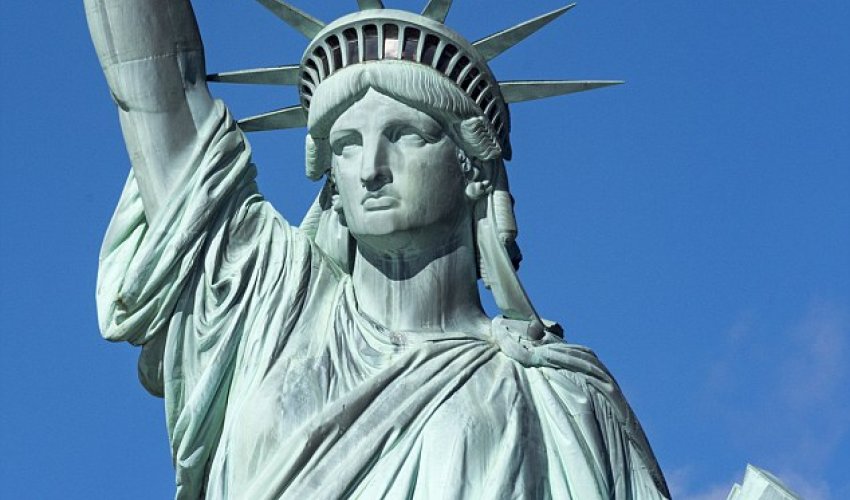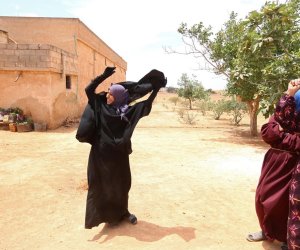Was the inspiration for the Statue of Liberty a Muslim woman?

The Statue of Liberty, a symbol of democracy and freedom that has greeted countless immigrants to US shores, was inspired by a project representing an Arab woman guarding the Suez Canal, researchers said.
The recent findings are especially startling for some in the United States amid a heated debate over the arrival of refugees from war-scarred Syria and other Muslim majority countries.
French sculptor Frederic Auguste Bartholdi, who traveled to Egypt in 1855-1856, developed there a 'passion for large-scale public monuments and colossal sculptures,' said the U.S. National Park Service, which guards the Statue of Liberty in New York.
When the Egyptian government sought proposals in 1869 to build a lighthouse for the Suez Canal, Bartholdi designed a huge statue of a robed woman holding a torch, which he called 'Egypt (or Progress) Brings Light to Asia.'
The sculpture originally took the 'form of a veiled peasant woman,' explained Barry Moreno, who has written about the statue, as quoted by the US-funded Smithsonian Institution.
'Bartholdi produced a series of drawings in which the proposed statue began as a gigantic female fellah, or Arab peasant, and gradually evolved into a colossal goddess,' added Edward Berenson, who has also written about the subject.
Bartholdi's second chance came when French historian Edouard de Laboulaye originated the idea of a monument presented by the French people to the United States representing 'Liberty Enlightening the World.'
In 1870, Bartholdi began designing the statue based on his previous design. The final product, representing Libertas, the Roman goddess of freedom, was inaugurated in 1886 for the country's centennial.
While there is certainly a connection between Bartholdi's initial design for the Suez Canal and the woman he designed to usher in immigrants to America, Berenson told Fox News that it's a 'serious oversimplification' to say Lady Liberty is a Muslim.
'There's a relationship between the Egyptian statue that Bartholdi first conceived in the late 1860s,' Berenson said. 'But that statue changed as it migrated to the United States. The original version of the statue made sense for Egyptian society. It wouldn't have made sense for America.'
Moreno added that the Egyptian project 'had nothing to do with the Statue of Liberty'.
'They’re both female figures but they’re not the same figure,' he said.
In addition to an Egyptian peasant woman, Bartholdi's own mother, Charlotte Beysser Bartholdi, has also long been rumored to be inspiration for Lady Liberty.
Some scholars of African-American studies also believe that Lady Liberty could have been modeled off of a black woman.
In a 2000 interview with the New York Times, Dr Leonard Jeffries Jr, a professor of African-American Studies at City College, said earlier models of the statue 'were more Negroid' and that 'the idea of the black Statue of Liberty has been kept out' of history.
(dailymail.co.uk)


www.ann.az
Similar news
Similar news




































 Photo
Photo 

 Video
Video 

